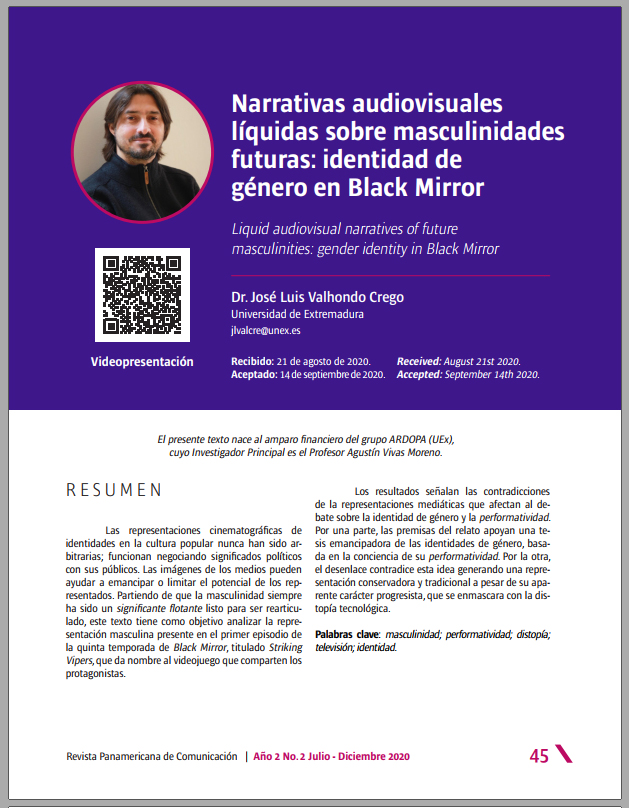Narrativas audiovisuales líquidas sobre masculinidades futuras: identidad de género en Black Mirror
Contenido principal del artículo
Resumen
Las representaciones cinematográficas de identidades en la cultura popular nunca han sido arbitrarias; funcionan negociando significados políticos con sus públicos. Las imágenes de los medios pueden ayudar a emancipar o limitar el potencial de los representados. Partiendo de que la masculinidad siempre ha sido un significante flotante listo para ser rearticulado, este texto tiene como objetivo analizar la representación masculina presente en el primer episodio de la quinta temporada de Black Mirror, titulado Striking Vipers, que da nombre al videojuego que comparten los protagonistas. Los resultados señalan las contradicciones de la representaciones mediáticas que afectan al debate sobre la identidad de género y la performatividad. Por una parte, las premisas del relato apoyan una tesis emancipadora de las identidades de género, basada en la conciencia de su performatividad. Por la otra, el desenlace contradice esta idea generando una representación conservadora y tradicional a pesar de su aparente carácter progresista, que se enmascara con la distopía tecnológica.
Detalles del artículo
Sección

Esta obra está bajo una licencia internacional Creative Commons Atribución-NoComercial-SinDerivadas 4.0.
Cómo citar
Referencias
Baker, Brian (2006). Masculinity in fiction and film. Representing men in popular genres, 1945-2000. Bloomsbury.
Balló, Jordi y Pérez, Xavier (2006). La semilla inmortal. Los argumentos universales en el cine. Anagrama.
Butler, J. (2011). Bodies that matter: On the discursive limits of sex. Routledge. https://doi.org/10.4324/9780203828274
Bürch, Nöel (1985). Praxis del cine. Fundamentos.
Cohan, Steven & Hark, Ina R. (eds.) (1993). Screening the male: exploring masculinities in the Hollywood cinema. Routledge.
Dacynger, K.; Rush, J. Alternative scriptwriting: rewriting the Hollywood formula. Taylor & Francis, 2013.
Goffman, Erwin (1959) The Presentation of Self in Everyday Life. Doubleday, Anchor Books.
Hall, Stuart y du Guy, Paul (2011). Questions of cultural identity. Sage Publications.
Lefcourt, H. M. (1991). Locus of control. En J. P. Robinson, P. R. Shaver, & L. S. Wrightsman (Eds.), Measures of social psychological attitudes, Vol. 1. Measures of personality and social psychological attitudes (p.413–499). Academic Press. https://doi.org/10.1016/B978-0-12-590241-0.50013-7
Lyotard, Jean.-François. (1979). La condition postmoderne. Rapport sur le savoir. Les Editions de Minuit.
Neale, Steve. (1993). “Masculinity as spectacle: Reflection on Men and Mainstream Cinema” en Screening the Male: exploring masculinities in Hollywood Cinema, 9-21. Routledge.

